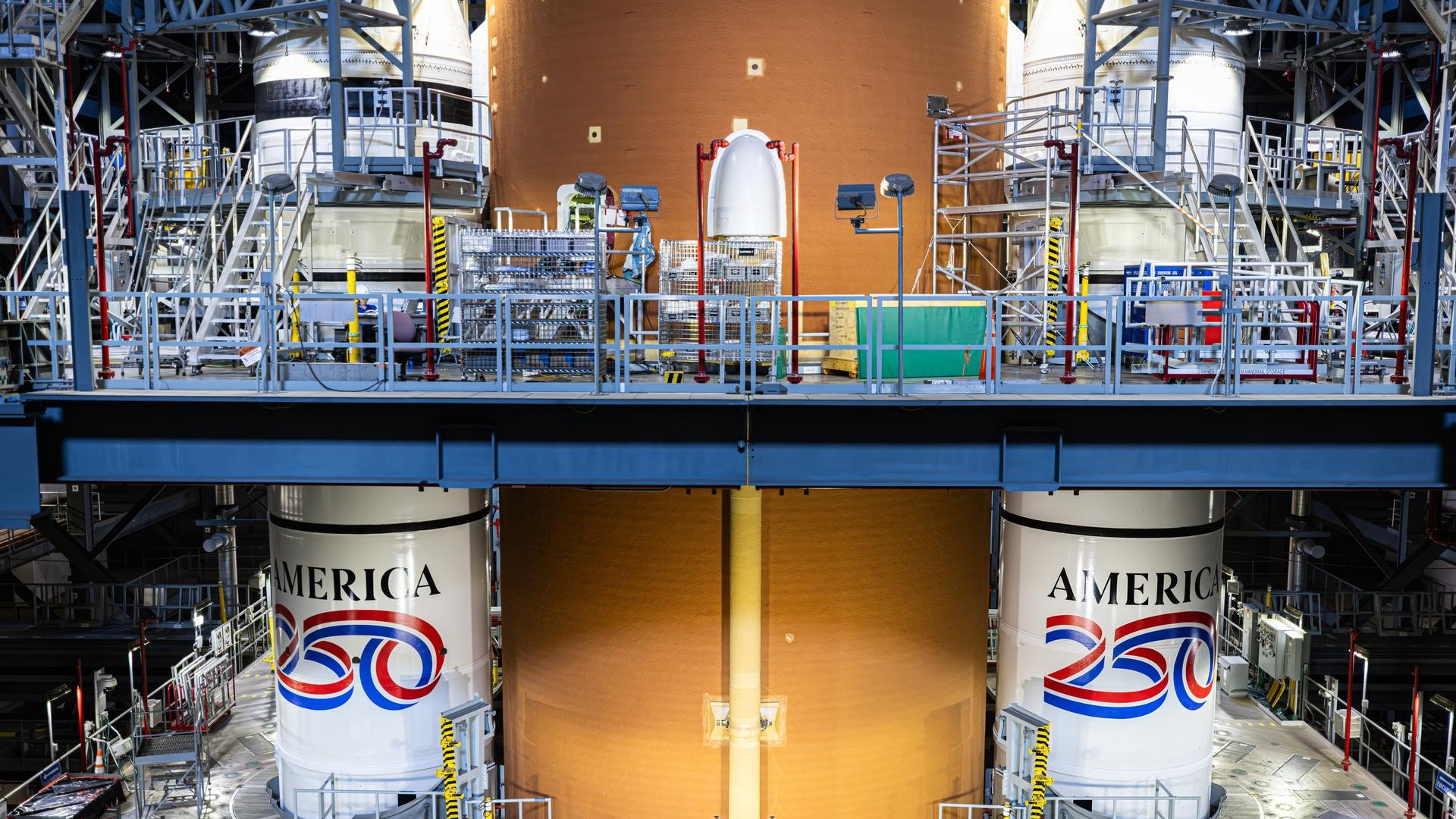NASA and NRO to Team-Up on Lunar Spacecraft
The U.S. National Reconnaissance Office (NRO) and NASA have agreed to cooperate on the development of a lunar spacecraft intended as the first shot in a series of robotic probes paving the way for future human exploration missions, according to an NRO official.
NASA and the NRO signed an agreement in November to work together on the payload for the Lunar Reconnaissance Orbiter with the hope that the technology from that effort can be applied to a military satellite expected to be launched around the same timeframe, said Pedro "Pete" Rustan, director of advanced science and technology at the NRO.
The cooperation will focus on developing a miniature synthetic aperture radar sensor that the lunar probe will use to develop detailed maps of the Moon's surface, Rustan said in a Jan. 25 interview.
The lunar probe is expected to begin its mission, which will run over the course of a year, in 2008. The Pentagon is planning to launch the fourth in a series of small spacecraft known as TacSat or Joint Warfighter spacecraft that year.
While the Pentagon has not finalized the payload for that spacecraft, the NRO hopes to place a small synthetic aperture sensor on the satellite, Rustan said.
The NRO is also working with NASA to reduce the size of synthetic aperture radar sensors used on spy satellites through NASA's experience with the Interferometric Synthetic Aperture Radar program, Rustan said. The NRO and NASA began collaborating in this area about a year ago following discussions by the partnership council that includes NASA Administrator Sean O'Keefe, NRO director Peter Teets, and other top military officials who oversee space work, he said.
Other examples of joint efforts include automated data processing, Rustan said. The NRO and the National Geospatial-Intelligence Agency are working with NASA officials to take advantage of technology used to automate processing of image data used by the Mars Global Surveyor spacecraft, he said.
Breaking space news, the latest updates on rocket launches, skywatching events and more!
While automated data processing helped NASA identify aspects of Mars' terrain, the NRO and National Geospatial-Intelligence Agency hope to apply it towards identifying military targets like tanks and aircraft, Rustan said. The Pentagon has some rudimentary capability in this area today, but needs significant improvement as analysts are unable to keep up with the reams of collected pictures, he said.
The NRO plans to begin testing some of the new automation techniques this year, and will constantly work to improve the methods, Rustan said.
Rustan characterized cooperation between the NRO and NASA as "outstanding," and said that it had grown stronger as NASA began its space exploration initiative and the NRO faces the war against terrorism.
Robert Dickman, deputy for military space in the office of the undersecretary of the U.S. Air Force, said that the Pentagon and NASA had a prime opportunity for collaboration when O'Keefe, a former Navy secretary and Pentagon comptroller, took over at NASA, and Teets, a former top Lockheed Martin executive with experience building spacecraft for NASA, became the undersecretary of the Air Force and director of the NRO.
However, cooperation has not panned out as hoped, Dickman said. The two had hoped to work together on the development of new launch vehicle technology, but NASA's attention since early 2003 has been on the aftermath of the space shuttle Columbia tragedy, returning the shuttle to flight, and embarking on the president's space exploration initiative, which has shifted its focus outside Earth orbit, he said.
Meanwhile, the Air Force has been preoccupied with finding ways to support Lockheed Martin Corp. and Boeing Co., its primary launch providers, due to the poor commercial launch market, Dickman said. The Air Force has also focused on developing rockets that can launch small satellites in a fast and inexpensive manner, he said.
Such rockets are not likely to fit into NASA's plans for bringing humans to the Moon and Mars, Dickman said. But more launch cooperation could come as a result of the U.S. Space Transportation Policy signed by President George W. Bush in December that calls on NASA and the Pentagon to collaborate on the development of a heavy lift rocket for space exploration.
The policy instructs the agencies to strongly consider using the Evolved Expendable Launch Vehicle rockets developed by Boeing and Lockheed Martin for the Air Force as they made plans for the exploration vehicle.
Pentagon officials are poised to begin discussions on the matter with NASA, Dickman said in a Jan. 11 interview. Only Boeing Co. has built a heavy lift variant of the rockets thus far, but Lockheed Martin would likely need to do so as well if NASA were to use them for exploration, he said.
NASA use of the those rockets could help lighten the burden on the Air Force for supporting the two companies, which has cost more than $100 million annually over the past two years, but the Air Force has not yet studied specific figures, Dickman said.
In the meantime, NASA and the Air Force Research Laboratory continue to work together on the Integrated Powerhead demonstration, said Michael Braukus, a NASA spokesman. NASA and the Air Force have spent about $80 million on that effort, which is intended to develop an experimental reusable engine capable of 250,000 pounds of thrust, since 1994.
NASA is also working with the National Geospatial-Intelligence Agency to use data from intelligence systems to monitor the space shuttle during missions. Allard Beutel, a NASA spokesman, said that several simulation exercises have been conducted in recent months to develop ways to gather and share the information.
Jeremy Singer is a former journalist who specialized in stories about technology, including cybersecurity, medical devices, big data, drones, aerospace and defense. He now works as head of communications at Morse Corp, a company that creates algorithm development, software development and system integration services to solve issues in the aerospace industry.
